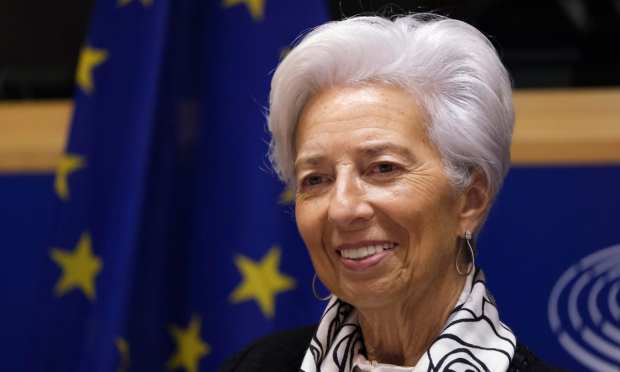ECB’s Lagarde Says Embrace Digital Euro, Ditch Cryptocurrencies

The European Central Bank (ECB), like the Federal Reserve, the Bank of England and other central banks, is working on different projects to develop a central bank digital currency (CBDC).
While most central banks haven’t decided yet whether issuing a retail CBDC is a desirable outcome, there are more and more signs that individual members of these central banks are convinced this is a good, and necessary idea, to preserve the role of their national currencies in a digital world.
But if there is one central bank that is openly advocating for the adoption of a CDBC, it is the ECB. Fabio Panetta, board member of the ECB, has been explaining the benefits of a digital euro to many different audiences this year perhaps, in part, because the digital euro doesn’t have all the public support that regulators wished it had. A survey conducted by the European Commission showed the overwhelming majority of respondents opposed the adoption of a digital euro.
Read more: EU Faces Citizens’ Opposition in Race for Digital Euro
But the message that a digital euro can achieve financial stability, accessibility and other benefits in the digital age came from the top this week. ECB President Christine Lagarde wrote in a blog post that the digital euro is “an anchor for the whole payment system.”
The overall message is that public money is necessary, even for the success of other types of private money, because people trust that private money can always be converted into central bank money.
“[P]rivate providers cannot truly replicate the role of central bank money,” Lagarde wrote.
Crypto assets cannot guarantee one-to-one convertibility with central bank money because they are not an efficient means of payment, she argued. And stabelcoins are vulnerable to runs.
Another good reason to adopt a digital euro, Lagarde wrote, is that private sector solutions tend to be dominated by a handful of providers. These companies, including Big Tech companies, can expand quickly, “increasing the risk of market-abusive behavior.” The main concern for the ECB is not only that private companies dominate the payment sector, but that these companies are usually non-European companies, and they could eventually dominate the European payment market.
Thus, the conclusion that the ECB drew from these risks is that to preserve a stable and reliable payment system in Europe, and to protect the strategy autonomy of European payments and monetary sovereignty, it is necessary to have a digital euro. This, and other similar statements, suggested that the discussions about a digital euro at the ECB, and possibly other EU institutions, are moving from whether a CBDC is necessary to how to design a CBDC that pleases everyone.
And this is what the second part of Lagarde’s post is about, advocating for a digital euro that provides solutions to consumers, merchants and the financial system, including banks.
Lagarde noted that the ECB is expected to complete the “investigation phase” of the digital euro in fall 2023. The ECB is already conducting pilot tests with consumers and merchants to learn more about the key issues that a CBDC should address.
After the investigation phase, the ECB may be in a better position to decide which features the digital euro should have, but Lagarde cited some key principles that are already clear.
For instance, a digital euro should be widely accepted, easy to use, low cost and secure. It should also benefit people with limited access to digital payments to support financial inclusion. And most importantly, at least for European citizens, it must protect privacy.
Read more: Like Its Predecessor, the Digital Euro Will Require Security, Mobility
For all PYMNTS crypto and EMEA coverage, subscribe to the daily Crypto and EMEA Newsletters.
